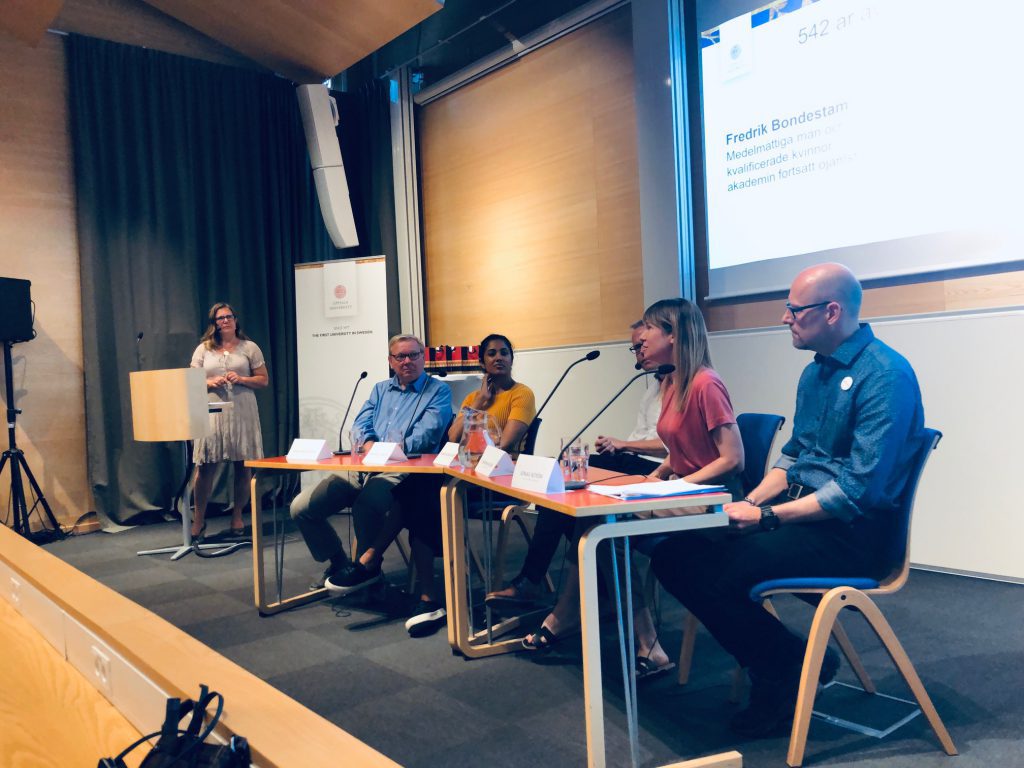Guest bloggers: Hillevi Englund and Sara Gredemark
“If the Academy starts to elect women, at what rung on the scale of created beings will it end?” This was one of the arguments raised in 1889 against electing Sonya Kovalevsky to the Royal Swedish Academy of Sciences. In its report “The man of science is not a woman” (PDF, in Swedish), the Allbright Foundation observes that arguments to the same effect still abound at Swedish higher education institutions, 130 years later.
Qualifications are women researchers’ best friend, according to Fredrik Bondestam, opening Uppsala University’s seminar in Almedalen on gender inequality in academia on Monday morning. For despite national recruitment targets for professorial posts and the existence of well-qualified women, the statistics are quite clear: progress towards gender equality in higher positions at Swedish higher education institutions remains painfully slow.
Led by Anneli Häyrén, Centre for Gender Research, the seminar discussed the consequences of gender inequality in academia for the quality of university research, education and practical application. The panel participants were Amanda Lundeteg, CEO of Allbright, Johanna Rickne, Professor at Stockholm University, Fredrik Bondestam, Director of the Swedish Secretariat for Gender Research, Lars Magnusson, Professor at Uppsala University, and Jonas Åström, Head of Uppsala University Innovation.

The panel, from left to right: Lars Magnusson, Amanda Lundeteg, Fredrik Bondestam, Johanna Rickne, Jonas Åström
The panellists confirmed that “the academic cult of male genius” still persists in academia, and that if professorial appointments had only been a matter of formal qualifications, we would not have had the situation we have today, where over 70 per cent of these positions are occupied by men. So what are the other factors involved? Where are the problems, what do they look like and, above all, how are they connected?
Fredrik Bondestam emphasised the need to take a holistic approach to HR issues, conditions for research, and norms and structures at both individual and organisational level. Targeted initiatives for increased gender equality that disregard the overall picture generally have limited effect and fail to change the fundamental set of interconnected problems. Moreover, they are often counterbalanced by a ‘restore mechanism’ that helps to maintain existing structures.
Is there any hope of change? What can we do in the future to change the gender inequality of academia after 542 years? Some of the panel’s proposals for bringing about change were:
- include external assessment when making appointments to counteract the effect of homogeneous groups of researchers;
- use formal quotas as a tool for increased gender equality;
- take the whole picture into account and review the entire process leading to the rank of professor;
- provide increased education and training in gender equality issues and increased monitoring of operations;
- make the process for appointment to post-doctoral positions more transparent and clearer.
